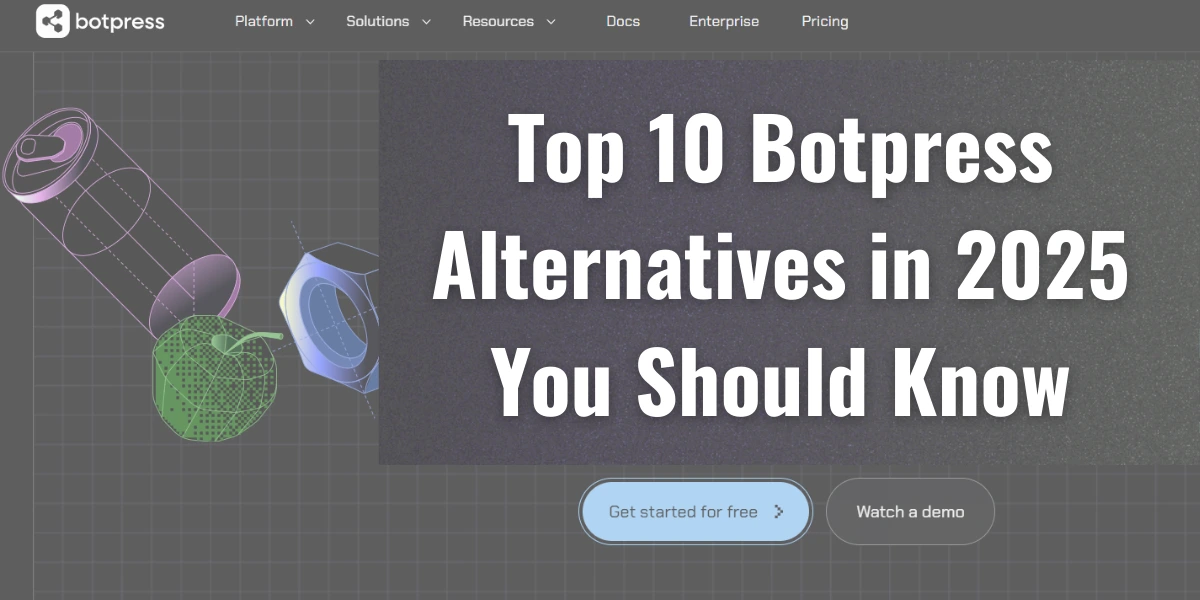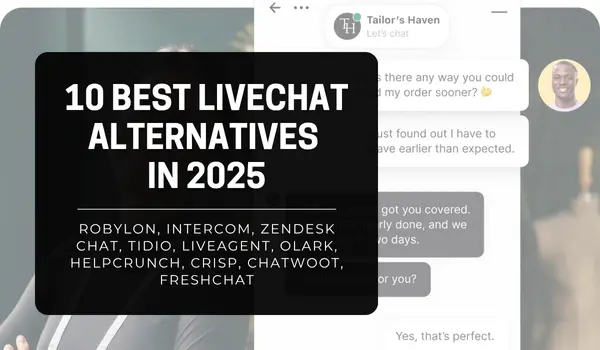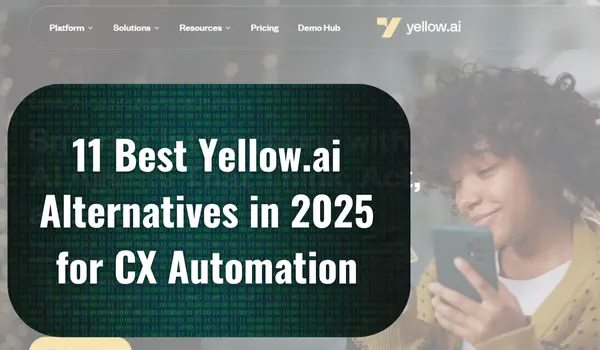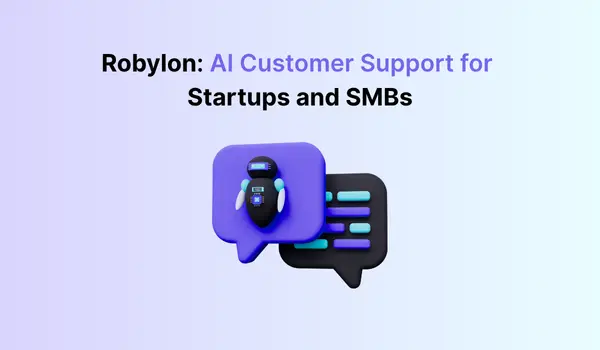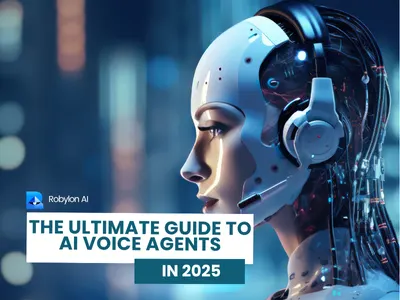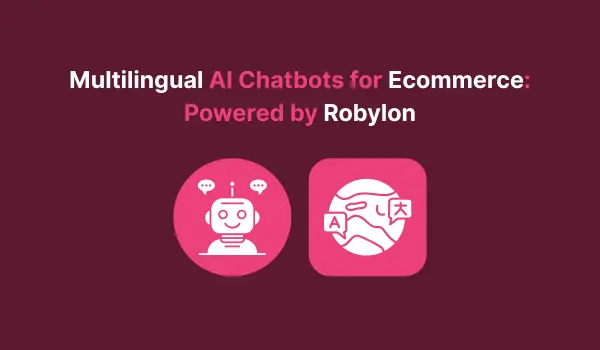TL;DR
Looking for BotPress alternatives due to setup effort, plugin limits, and production support gaps? This guide lists 11 competitors with use cases, core features, and pricing notes. Use the must-have checklist before switching.
Start with Robylon if you need AI agents that work across chat, voice, WhatsApp, email, and tickets, with built-in analytics and handoff. See how it connects to your stack: Book a demo
For technical teams, explore Rasa for open-source control or Microsoft Bot Framework on Azure. For design-led teams, Voiceflow and Landbot ship fast. For helpdesk-first buyers, evaluate Intercom, Zendesk, and Freshchat. For SMB sites, Tidio and Manychat offer quick wins.
Introduction
If you are searching for BotPress alternatives, you are not alone. Teams want faster setup, no-code control, and reliable production support in one stack. This guide compares the top BotPress competitors in 2025 across features, pricing notes, and real use cases. You will find options for no-code builders, open-source frameworks, and enterprise support suites.
Use the buying checklist in this post to validate each platform: omnichannel, LLM choice, knowledge ingestion, tool actions, analytics, and governance. Then scan the quick table to shortlist vendors for trials.
- Robylon: AI agents for chat, voice, WhatsApp, and tickets with support analytics.
- Rasa: Open-source, high control for developers
- Dialogflow: Google NLP with broad language support
- Microsoft Bot Framework: Flexible SDK in the Azure ecosystem
- Voiceflow: Strong no-code design; prototype to production
- Intercom: In-app support, help center, and automation
- Zendesk: Support suite with bots and ticketing
- Freshchat (Freshworks): Messaging tied to the Freshworks stack.
- Landbot: Visual flows for web and WhatsApp
- Tidio: SMB-friendly live chat with AI features
- Manychat: Social + WhatsApp focus for marketing and support
What is BotPress
BotPress is a chatbot framework and visual builder for conversational AI. Teams use it to design multi-turn flows, connect to data, and deploy assistants at scale. It supports NLU/NLP, intents, entities, and modular extensions.
Common jobs include customer support, FAQ automation, and lead capture. It suits teams that want developer-friendly control with a visual canvas and usually need time for setup, testing, and hosting choices.
Core capabilities
- Visual flow builder: Drag-and-drop nodes for dialog, actions, and handoffs
- Knowledge use: Connect docs and URLs to answer policy or product questions
- Intent and entity handling: Route conversations and extract key details
- Integrations and APIs: Call CRMs, order systems, or internal services
- Multi-channel: Web widget, WhatsApp, Instagram, Slack, Microsoft Teams, and more
- Testing and analytics: Preview flows, track drop-offs, and improve responses
Where does it fit best?
- Product and support teams that need a mix of visual design and code
- Engineering-led orgs that value custom actions, SDKs, and environment control
- Businesses rolling out multiple bots across regions and channels
Why look for alternatives
- Setup complexity: Teams want no-code builds and faster launches with fewer developer cycles. Visual flow plus code often slows non-technical users.
- Omnichannel gaps: Native WhatsApp, Instagram, chat, email, and voice handoffs are limited in many stacks. Support leaders prefer one platform for multiple channels.
- Production support needs: Teams ask for built-in analytics, routing, ticketing, SLAs, and handover to a human in one place. Fragmented tools raise effort and risk.
- Maintenance overhead: Custom code, plugins, and SDK updates demand ongoing upkeep. This affects reliability, testing, and rollbacks across environments.
- Knowledge control: KB ingestion, versioning, and accuracy monitoring can feel thin at scale. Mature teams need auto-sync, evaluation, and guardrails for high traffic.
- Cost predictability: Pricing tied to monthly active users (MAUs), messages, or AI usage can spike during launches or seasonal peaks. Finance teams prefer transparent tiers and pooled AI credits.
- Specific integration needs: Many organisations want out-of-the-box connectors for CRMs, commerce, and help desks instead of custom builds.
- Preference for no-code: Support, marketing, and operations teams favor drag-and-drop, templates, and guided flows to ship in days, not weeks.
- Open-source parity: Security-sensitive buyers want self-hosted editions with feature parity to the cloud, plus clear licensing and auditability.
- Operational analytics: Leaders need deflection, AHT, CSAT, intent accuracy, and sentiment in a single view, not stitched across tools.
Evaluation criteria (how to compare tools fast)
- Built-in short-term memory, RAG with chunking, connectors to DB/URLs, and quality evals.
- Ease of use: True no-code/low-code, drag-and-drop, and quick starts
- Integration depth: Ready connectors for CRM, help desk, commerce, analytics
- AI strength: Solid NLU, multilingual, sentiment, and clean handover
- Cost-effectiveness: Transparent tiers, trial or free plan, predictable usage
- Security & compliance: RBAC, encryption, SOC 2/HIPAA options
- Support & docs: Fast human support, guides, and an active community
- UX quality: Clear navigation for flows, analytics, integrations, and KB
Switch from BotPress? Try These Chatbot Platforms
1. Robylon
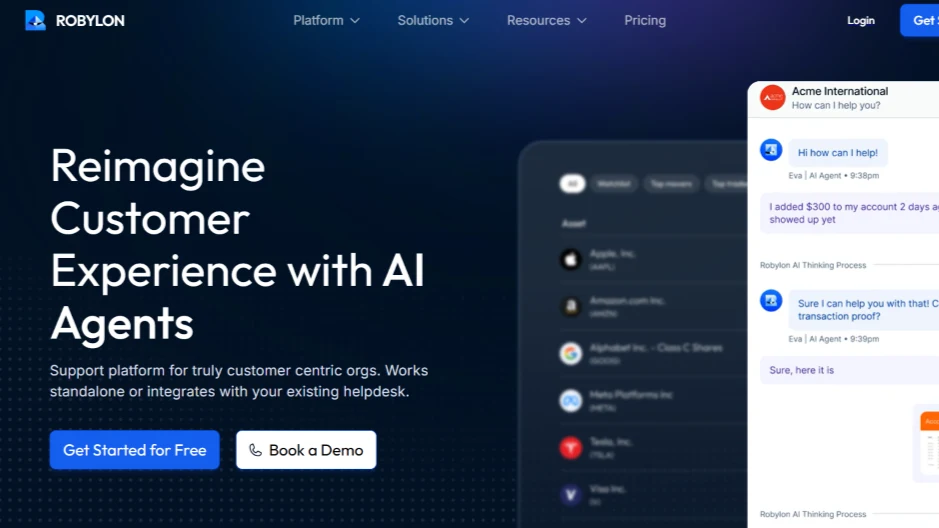
Robylon provides AI agents for chat, voice, WhatsApp, email, and ticketing with built-in analytics and routing. It focuses on support automation and omnichannel deployments for growth and enterprise teams.
Best Use Case – Customer support deflection and chat-to-ticket workflows across web + messaging channels with SLA-grade observability. Ideal when you need one stack for AI and human agents, advanced reporting, and customization options.
Key Features
- Omnichannel (web, chat, social media, WhatsApp, voice) with native handoff to a human
- Knowledge ingestion + auto-sync
- Secure API/CRM actions
- Agent analytics (deflection, CSAT, AHT)
Automation – LLM-powered agents with tools/actions for refunds, bookings, CRM updates; governed handoff and transcripts for audit
Pricing – Free; Starter $39/mo; Business $199/mo; Custom Enterprise plans available
Industry – SaaS, eCommerce, fintech, and consumer brands with high Chat, WhatsApp, and Voice call volumes
Limitations – Needs a short implementation to connect data and map policies before scaling automation reliably
Why Better than BotPress?
All-in-one support stack (omnichannel, analytics, ticketing) reduces integration/maintenance overhead. Faster non-developer launches than a developer-centric framework.
2. Rasa
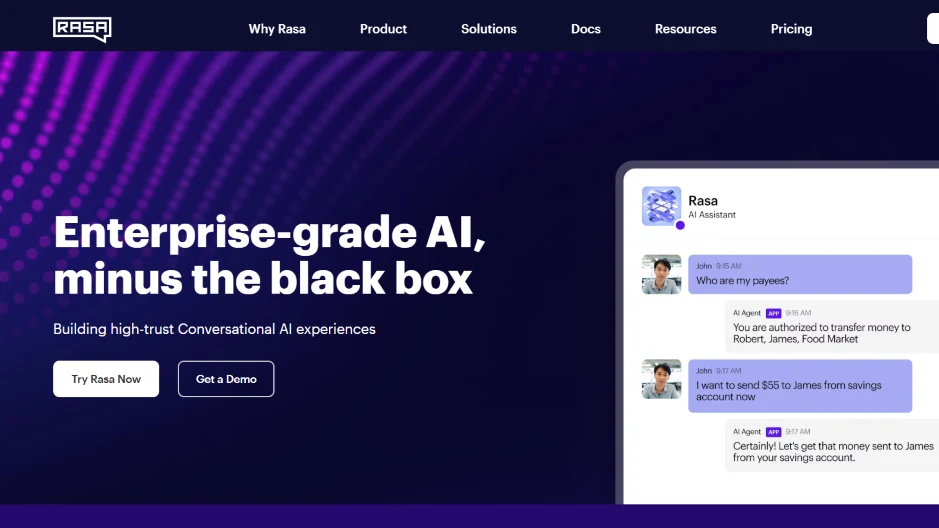
Open-source framework for building enterprise conversational AI with full data control. Offers commercial support and products for scale.
Best Use Case– Organizations needing on-prem/private-cloud deployments, custom NLU pipelines, and strict governance over data and models.
Key Features
- Modular NLU & dialogue policies
- Custom action server
- Multi-channel connectors
- Deploy anywhere (Kubernetes/Docker)
Automation– Orchestrates deterministic and LLM-assisted flows; integrates tools and backends via custom actions for end-to-end automation.
Pricing– Rasa Open Source: free; Rasa commercial/enterprise: custom by sales
Industry– Regulated industries (finance, healthcare), telco, and large B2C with strict data residency needs
Limitations– Steeper learning curve; many integrations and analytics require engineering effort to implement and operate reliably at scale
Why Better than BotPress?
Greater code-level control and on-prem parity, true open-source core without gating advanced runtime behind SaaS tiers.
3. Dialogflow (Google Cloud)

Google’s platform for building chat/voice experiences (ES and CX editions) with Google Cloud integrations.
Best Use Case– Multilingual bots, telephony/IVR, and mobile app assistants where Google speech, NLU, and Cloud services are strategic.
Key Features
- CX state machine for complex flows
- Speech-to-Text/Text-to-Speech
- Rich channel integrations
- BigQuery/Cloud Functions hooks
Automation– Event/intent orchestration plus webhooks for real-time actions; pairs well with Contact Center AI stacks
Pricing (verified) – Pay-as-you-go by request/session; separate rates for ES/CX, text vs voice, and add-ons
Industry– Retail, telco, travel, and contact centers standardizing on Google Cloud
Limitations– Cost modeling is granular; multi-SKU billing (text/voice/telephony) needs careful forecasting across regions and channels
Why Better than BotPress?
Native Google speech/NLU and CCaaS integrations; mature telephony. Scales globally with Google Cloud governance.
4. Microsoft Bot Framework (Azure Bot Service)
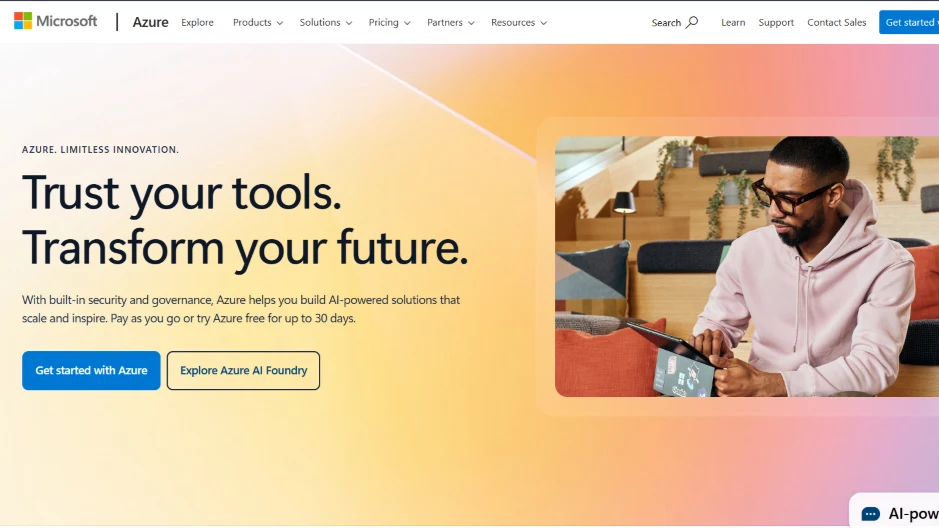
SDK + Azure Bot Service for building bots with Cognitive Services and Azure channels.
Best Use Case– Teams on Azure needing deep integration with Microsoft 365/Teams and enterprise identity/security.
Key Features
- SDK (C#/JS) with Composer
- Azure Channels (Teams, Web Chat, etc.)
- Cognitive Services
- DevOps + monitoring
Automation– Webhooks and skills trigger back-office systems; Azure Functions/Logic Apps enable robust task automation.
Pricing (verified) – Standard channels: free; Premium channels: billed per 1,000 messages after the included quota
Industry – Enterprise IT, internal helpdesk, and Teams-centric organizations
Limitations– Developer-led builds; rich experiences often need Azure services configuration and DevOps investment.
Why Better than BotPress?
First-class Teams/Azure ecosystem support. Enterprise identity, compliance, and observability out of the box.
5. Voiceflow
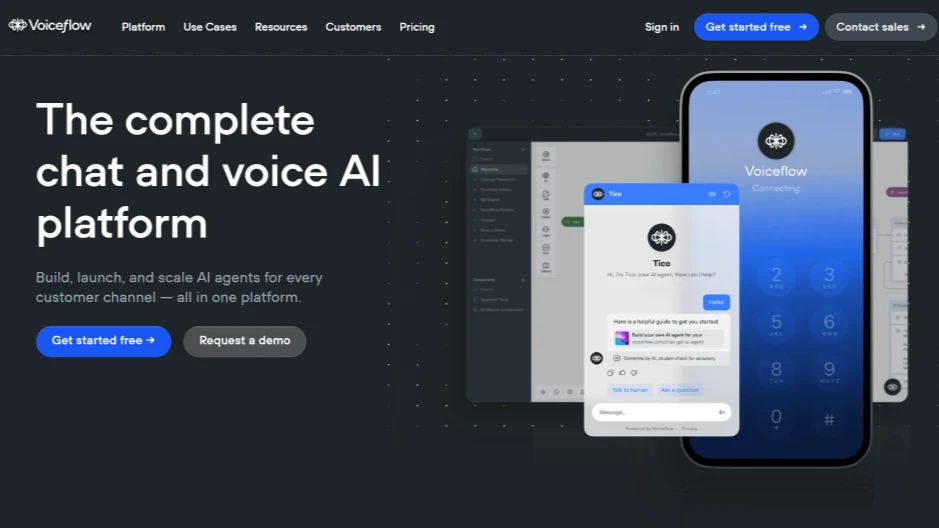
Collaborative visual platform to design, prototype, and ship chat and voice agents; supports multiple LLMs.
Best Use Case– Cross-functional teams (CX, design, engineering) building complex flows for web chat and telephony.
Key Features
- Drag-and-drop flow canvas
- nowledge base + multi-model routing
- API/JS steps; Testing and conversation analysis
Automation– Orchestrates tools and APIs inside flows; supports phone via Twilio for action-taking voice agents
Pricing– Pro: $60/user/mo; Business: $150/user/mo; Enterprise: custom
Industry– E-commerce, SaaS onboarding, and operational IVR/voice agents
Limitations– Some integrations require APIs/JS; advanced analytics and governance features are lighter than full helpdesk suites
Why Better than BotPress?
Faster collaborative design without heavy coding, stronger voice/telephony design workflow than typical flow builders.
6. Intercom (with Fin AI)
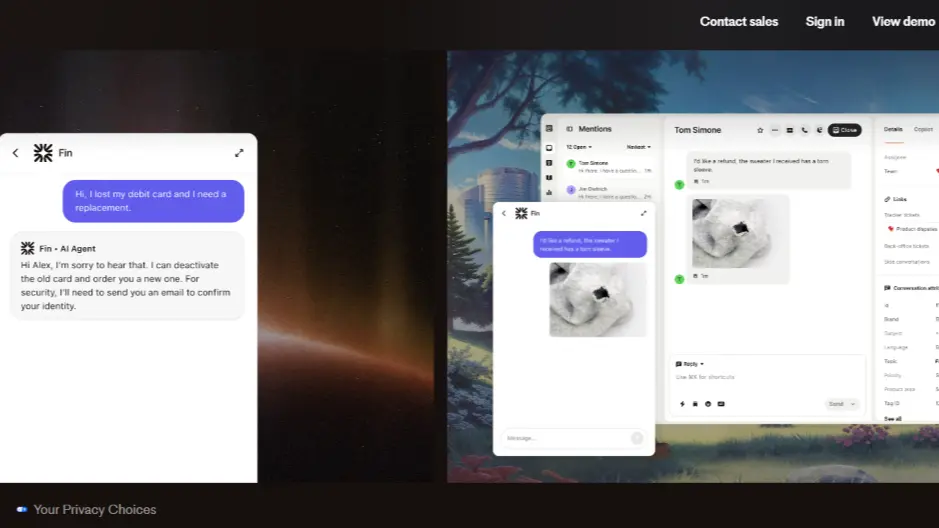
Customer service platform unifying inbox, bots, and outbound; Fin AI resolves common queries with RAG.
Best Use Case– SaaS and product-led businesses needing in-app support, proactive messages, and AI resolution in one system.
Key Features
- Shared inbox + help center
- Fin AI agent
- Proactive campaigns
- Deep app integrations
Automation– Resolution-first AI with governed handoff; workflows automate routing, SLAs, and lifecycle messaging
Pricing– Platform: from $39/seat/mo; Fin AI: $0.99 per resolution (min 50/mo)
Industry– B2B SaaS, fintech apps, marketplaces.
Limitations– Usage-based AI resolutions can add cost at scale; best value when adopting the Intercom stack broadly.
Why Better than BotPress?
Out-of-the-box helpdesk and AI with analytics for less build/integration work than a framework approach.
7. Zendesk (Suite + bots)

End-to-end support suite with ticketing, messaging, knowledge, and bots; widely adopted in enterprise.
Best Use Case– Teams standardizing on Zendesk for omnichannel support with native bot deflection and agent workflows
Key Features
- Unified agent workspace;
- Answer Bot/AI;
- macros + SLAs;
- Robust reporting
Automation– Triggers, automations, and AI suggestions speed routing, replies, and knowledge surfacing
Pricing– Suite plans start at $55/agent/month; higher tiers add advanced AI and analytics
Industry– Enterprise and mid-market support operations across many verticals.
Limitations– Deep bot customization is limited versus code frameworks; advanced AI is often tied to higher-tier plans.
Why Better than BotPress?
Production-ready helpdesk, SLAs, and analytics in one stack, with less custom build and maintenance to go live.
8. Freshchat (Freshworks)

Freshworks’ messaging/live chat product with Freddy AI and helpdesk interoperability in the Freshworks suite
Best Use Case – Large or scaling support teams wanting shared inbox, bots, and CRM/helpdesk integrations at agent-based pricing.
Key Features
- Omnichannel messaging;
- Freddy AI assist;
- Skills-based routing;
- 400+ integrations via the Freshworks ecosystem
Automation– Flows, intent bots, and AI drafting; rules automate assignment and SLAs across channels.
Pricing– Starts at $19/agent/month; higher tiers add advanced capabilities
Industry– Retail, SaaS, and service teams consolidating on Freshworks
Limitations– Bot builder is less flexible for complex logic; advanced capabilities may require multiple Freshworks products
Why Better than BotPress?
Ready-made support stack with low setup time, predictable agent pricing compared to building/hosting a framework
9. Landbot
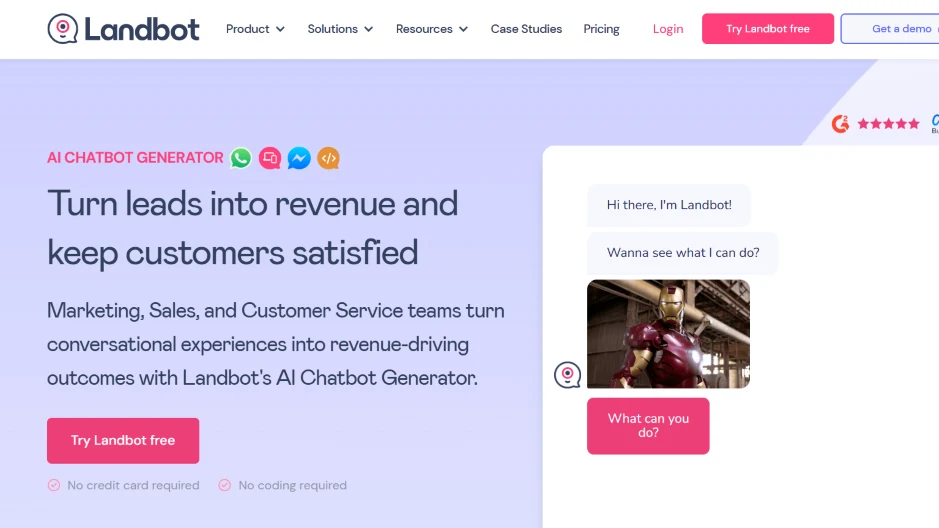
No-code builder for web and WhatsApp experiences focused on lead gen and guided support flows
Best Use Case– Marketing/sales and SMB support teams that need fast, branded conversational funnels without engineers
Key Features
- Visual flow builder
- WhatsApp webhooks/connectors
- Templates for funnels
- Integrations (Zapier, CRMs)
Automation– Conditional logic and webhooks drive actions; easy data capture and handover via forms
Pricing– Starter from €32/mo (annual) or €45/mo (monthly); Pro from €90/mo (annual) or €120/mo (monthly); Business: custom
Industry– DTC/eCommerce, education, B2B lead generation
Limitations– Complex, branching bots can become hard to manage; some integrations and analytics are gated to higher tiers
Why Better than BotPress?
Launches in hours with no code, Purpose-built for web/WhatsApp funnels over developer-heavy frameworks.
10. Tidio
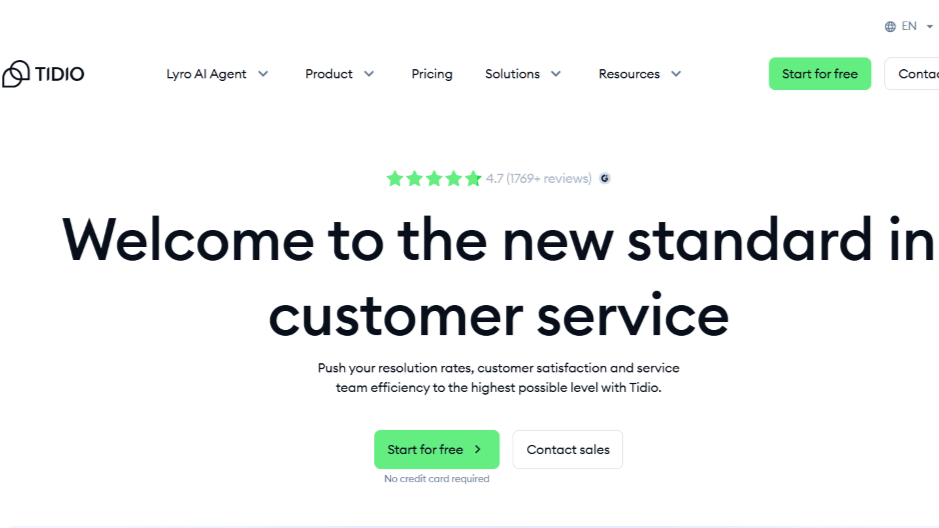
Live chat + AI chatbots (Lyro) for websites, with e-commerce integrations and a shared inbox.
Best Use Case– SMBs wanting plug-and-play website support, basic automation, and quick lead capture.
Key Features
- Drag-and-drop chatbot;
- Lyro AI trained on-site/FAQ;
- Unified inbox;
- Shopify/WordPress integrations
Automation– Templates and triggers automate FAQs, cart recovery, and handoffs; Lyro handles knowledge-based answers.
Pricing– Free plan available; paid tiers and add-ons priced by usage/features via official calculator; Lyro sold separately
Industry– E-commerce, local services, content sites
Limitations– Advanced analytics and mixed AI+flow orchestration are limited compared with enterprise suites or code frameworks
Why Better than BotPress?
Far faster time-to-value for SMB sites, with minimal setup compared to engineering-led BotPress builds.
Top 10 BotPress Competitors in 2025
Why is Robylon better than BotPress?
Robylon brings Chat, Email, WhatsApp, Instagram, and Voice under a single agent layer with linked ticketing and a live insights dashboard. Instead of Q&A, agents take actions (order lookups, refunds, KYC), hand off with context, and track outcomes end-to-end so you measure real resolution, not just replies.
1) Omnichannel continuity
2) Automation that acts (beyond Q&A)
3) Voice built in
4) Ticketing + analytics together
5) Proactive outreach
6) Faster to launch, simpler to scale
7) Governance and reliability
Book a demo to know more.
Conclusion
Choosing the right alternative to BotPress comes down to fit, not hype. Match your needs to the checklist:
- Ship speed with no-code
- Serve customers on chat, web, WhatsApp, Instagram, email, and voice -channel of their choice.
- Mix LLMs per workflow
- Keep knowledge in sync and evaluated
- Automate real actions with secure APIs
- Track deflection, AHT, CSAT, intent accuracy, sentiment
- Enforce roles, approvals, PII controls, and audit logs
- Budget with clear, fair tiers
If you want faster time-to-value, omnichannel continuity, and automation that acts, Robylon reduces the buildwork you’d otherwise do around Botpress, one product instead of a patchwork.
FAQs
Do I still need engineers with these alternatives?
For no-code stacks like Robylon, Intercom, Landbot, and Tidio, non-dev teams can ship. Code-first options such as Rasa or Azure SDK require engineering time.
How should I compare the total cost of ownership across vendors?
Model three months of usage: messages, tokens, channels, seats, and required add-ons. Include integration time and maintenance. Transparent tiers with pooled AI credits simplify budgeting.
How do I migrate from BotPress without downtime?
Run a staged cutover: export intents/FAQs, mirror flows in the new tool, soft-launch on low-risk channels, then switch traffic. Keep human handoff and SLAs ready.
What if I need voice or telephony as well as chat?
Check Dialogflow and Voiceflow for telephony design. Robylon adds voice plus chat-to-ticket as well as Whatsapp.
Can I bring my own knowledge base to these tools?
Yes, prioritize platforms with URL/file/CMS ingestion, auto-sync, and evaluation so you can measure answer accuracy over time.
Which platform is best for an enterprise helpdesk with AI?
Robylon, Intercom, and Zendesk add AI deflection, routing, SLAs, and analytics. If you want agents, tickets, and WhatsApp in one.
What is the easiest no-code alternative to BotPress for fast launches?
For support sites, Robylon, Tidio, or Landbot go live fast. For complex flows across teams, Voiceflow offers strong visual design and testing.
What is the best open-source alternative to BotPress?
Rasa for code-level control, private cloud or on-prem, and custom NLU pipelines. Consider it when data governance is strict.
Which BotPress competitor is best for WhatsApp and omnichannel support?
Choose Robylon for WhatsApp, web, email, voice, and ticketing in one stack. It has multi-lingual support and can integrate with 40+ tools like CRMs, Drive, and more.
What are the best BotPress alternatives in 2025?
Shortlist by use case: Robylon (omnichannel support and tickets), Rasa (open-source control), Dialogflow (Google speech and telephony), Microsoft Bot Framework (Azure), Voiceflow (design-first), Intercom/Zendesk/Freshchat (helpdesk), Landbot/Tidio/Manychat (SMB and marketing).

.png)



